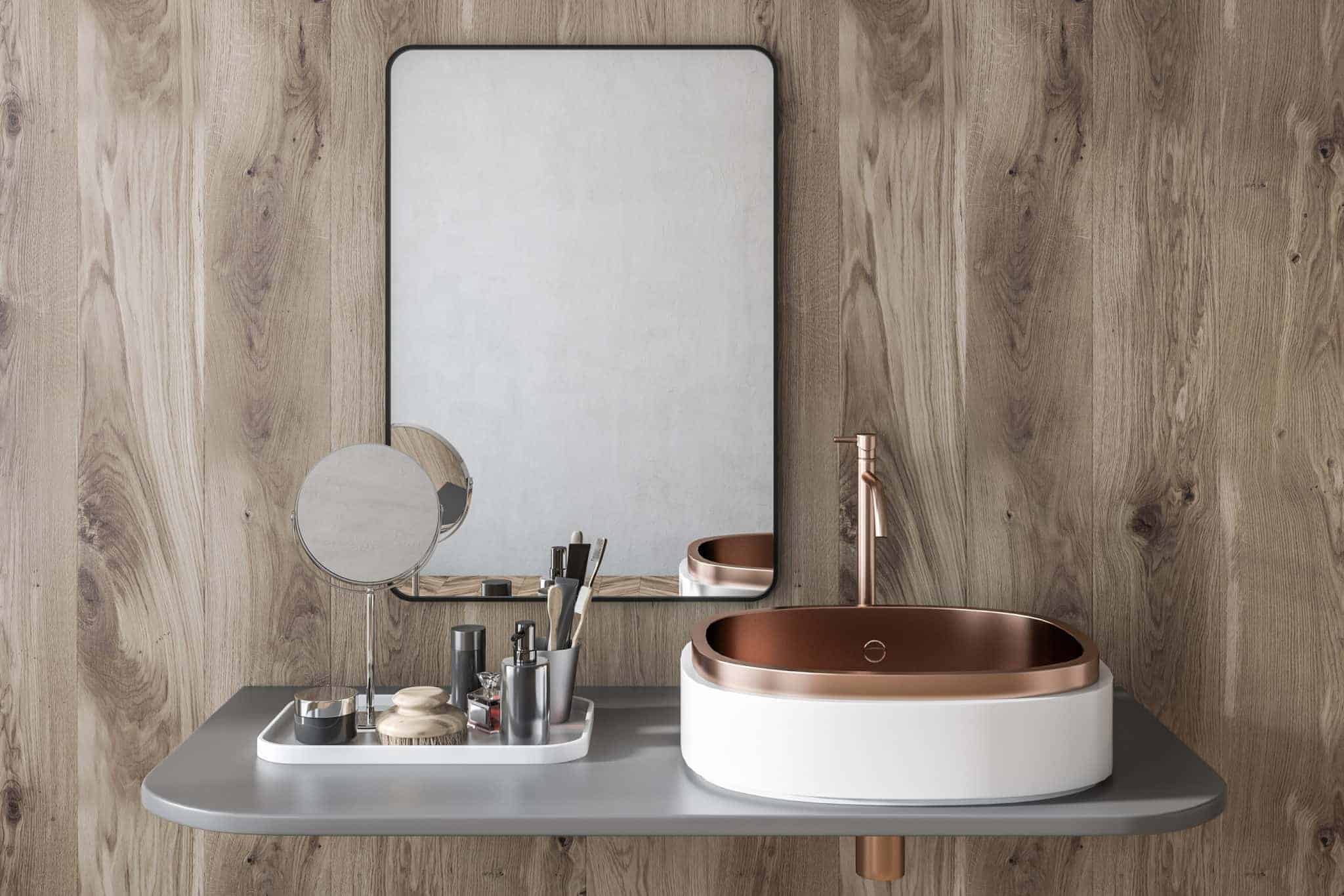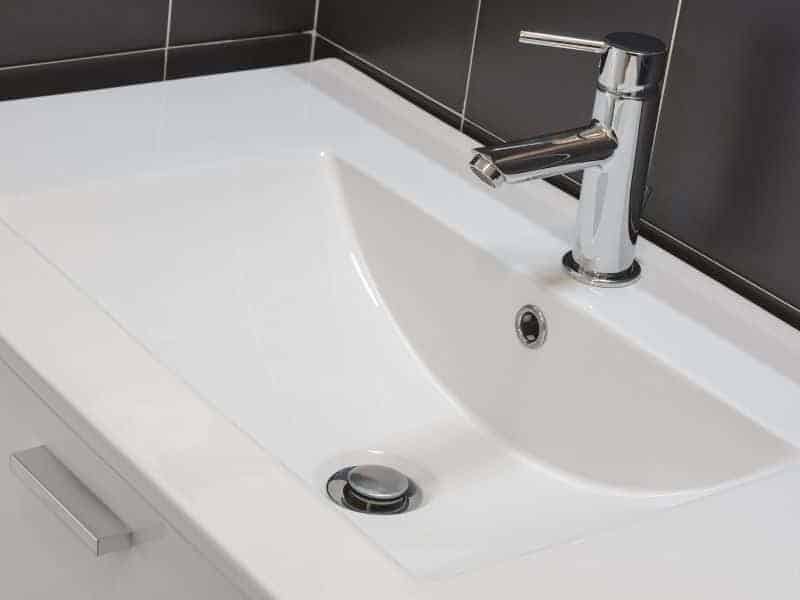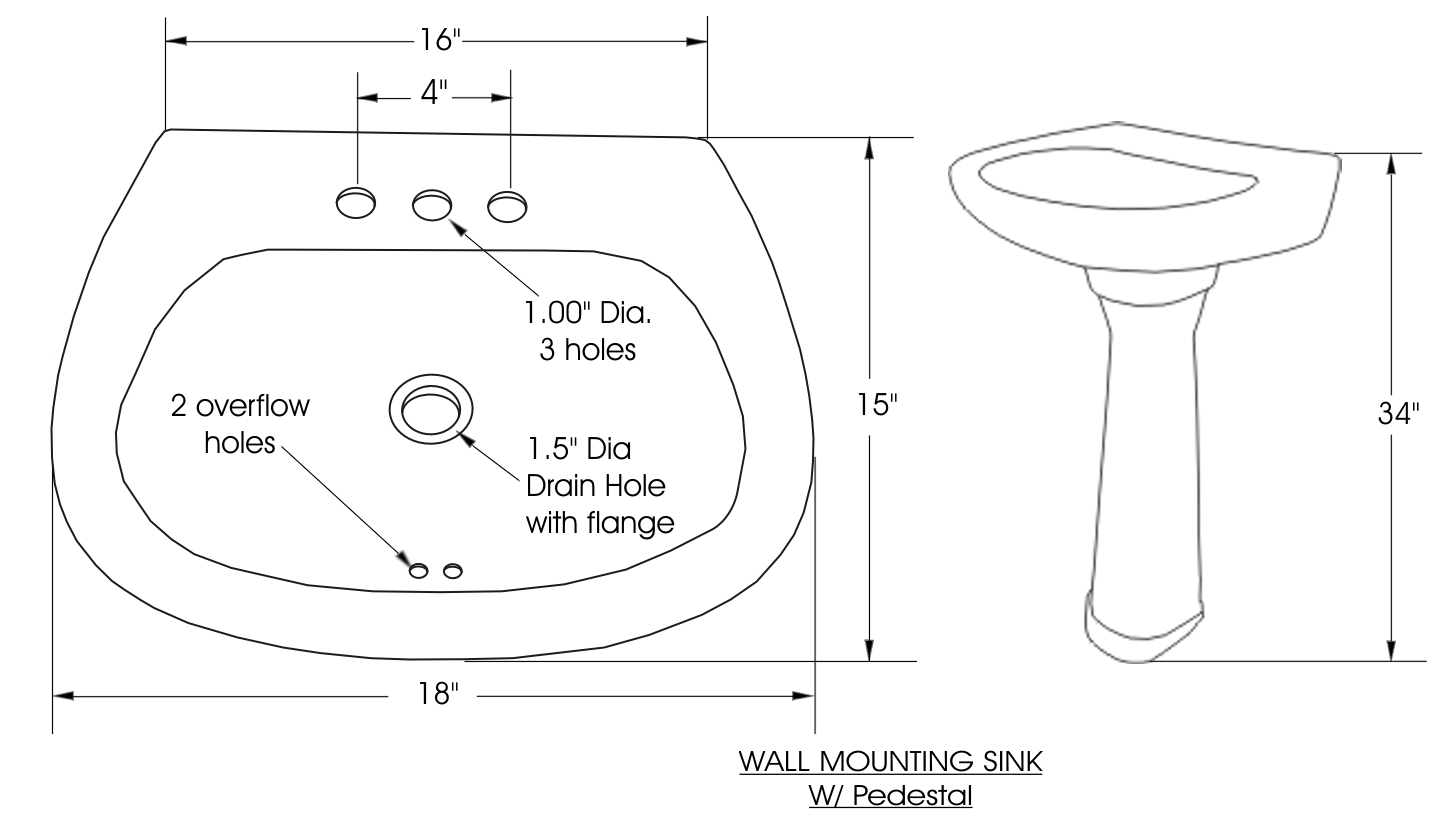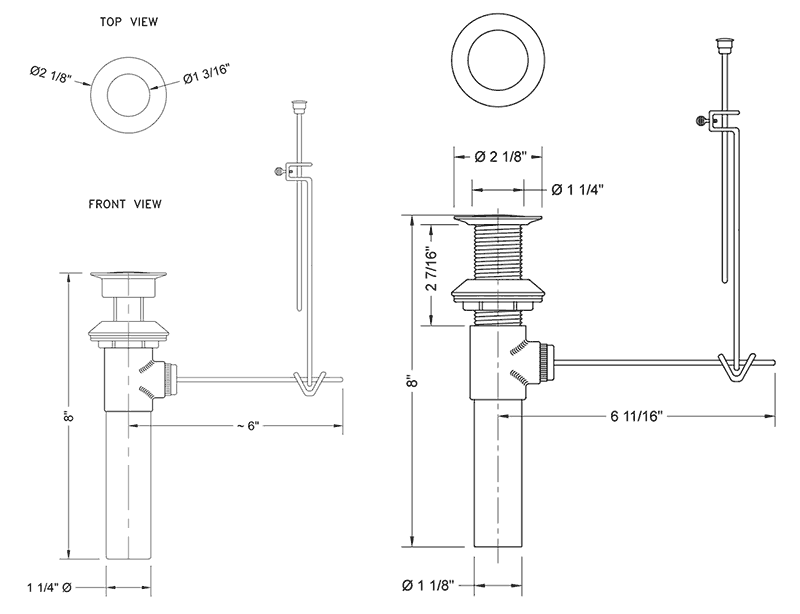Bathroom sink drain installation not fitting
Installing a bathroom sink drain may seem like a simple task, but it can quickly become frustrating if the drain doesn't fit properly. This can lead to leaks, clogs, and an overall inefficient sink. If you're struggling with bathroom sink drain installation not fitting, don't worry, you're not alone. In this article, we'll discuss common problems and solutions for fitting a bathroom sink drain.
How to install a bathroom sink drain
Before we dive into troubleshooting, let's briefly go over the steps to properly install a bathroom sink drain. Firstly, always make sure to turn off the water supply before starting any installation. Then, assemble the drain and rubber gasket, and tighten the lock nut to secure it in place. Next, apply plumber's putty around the drain opening and insert the drain. Finally, connect the drain pipe to the sink drain and tighten the fittings.
Troubleshooting bathroom sink drain installation
One of the most common problems with bathroom sink drain installation is the drain not fitting properly into the sink opening. This can be caused by a variety of factors, such as the drain being too big or too small, the drain flange not being aligned correctly, or the drain being installed at an angle.
If the drain is too big, it may be necessary to file down the edges to make it fit snugly into the opening. If the drain is too small, you may need to purchase a different size or use a rubber gasket to fill the gap. If the drain flange is not aligned correctly, you can adjust it by loosening the lock nut and repositioning it before tightening it back up. If the drain is installed at an angle, it can cause leaks, so make sure to check for proper alignment before securing it in place.
Common problems with bathroom sink drain installation
In addition to fitting issues, there are a few other common problems that can arise during bathroom sink drain installation. These include leaks, clogs, and improper drainage. To prevent leaks, make sure all fittings are tightened properly and that the drain is properly aligned. Clogs can be prevented by regularly cleaning the drain and using a hair catcher. If the drain is not draining properly, it may be necessary to check for blockages or adjust the drain fittings.
Tips for fitting a bathroom sink drain
To ensure a successful bathroom sink drain installation, here are a few tips to keep in mind:
- Measure the sink opening before purchasing a drain to ensure the correct size.
- Use plumber's putty around the drain opening for a tight seal.
- Use a rubber gasket if the drain is slightly too small for the opening.
- Adjust the drain flange for proper alignment before securing it in place.
- Use a hair catcher to prevent clogs.
DIY bathroom sink drain installation
While it may be tempting to try and install a bathroom sink drain yourself, it's important to have the proper knowledge and tools for the job. If you're not experienced in plumbing, it's best to hire a professional to ensure the installation is done correctly to prevent any future problems. However, if you're confident in your DIY skills, make sure to follow the steps and tips outlined in this article to ensure a successful installation.
Choosing the right size bathroom sink drain
As mentioned earlier, it's essential to measure the sink opening before purchasing a drain. Most bathroom sinks come with a standard 1 1/4 inch drain opening, but it's always best to double-check before making a purchase. If you're unsure, it's always better to go with a slightly smaller drain that can be adjusted with a rubber gasket rather than a larger drain that will require filing down.
Proper tools for bathroom sink drain installation
To properly install a bathroom sink drain, you'll need a few essential tools, including a wrench, pliers, plumber's putty, and a rubber gasket if necessary. It's always best to have these tools on hand before starting the installation to prevent any delays or complications.
Adjusting bathroom sink drain fittings
If you're having trouble with fitting the bathroom sink drain, it may be necessary to adjust the fittings. This can include the drain flange, lock nut, and drain pipe. It's essential to make these adjustments carefully to prevent leaks or other issues. If you're unsure how to adjust the fittings, it's best to consult a professional plumber.
Professional bathroom sink drain installation services
If you're struggling with fitting a bathroom sink drain or simply want to ensure a proper installation, it's always recommended to hire a professional plumber. They have the knowledge, experience, and proper tools to install the drain correctly and prevent any future problems. Plus, it can save you time and frustration in the long run.
In conclusion, bathroom sink drain installation not fitting can be a common issue, but it can be easily solved with the right knowledge and tools. By following the steps and tips outlined in this article, you can ensure a successful and efficient installation. And if you're not confident in your DIY skills, don't hesitate to call a professional for assistance. Your bathroom sink will thank you.
Why Proper Bathroom Sink Drain Installation is Key for a Well-Functioning Home

Common Problems with Bathroom Sink Drain Installation
 When it comes to designing and building a house, the bathroom is often given special attention. This is because it is one of the most frequently used rooms in any home and it is important for both functionality and aesthetics. However, even with careful planning and design, issues can arise during the installation process, such as
bathroom sink drain installation not fitting
. This can lead to frustration and inconvenience for homeowners, and it is important to understand the root causes of this problem in order to prevent it from happening.
When it comes to designing and building a house, the bathroom is often given special attention. This is because it is one of the most frequently used rooms in any home and it is important for both functionality and aesthetics. However, even with careful planning and design, issues can arise during the installation process, such as
bathroom sink drain installation not fitting
. This can lead to frustration and inconvenience for homeowners, and it is important to understand the root causes of this problem in order to prevent it from happening.
The Importance of Proper Drain Installation
 The
bathroom sink drain
may seem like a small and insignificant component of the overall bathroom design, but it plays a crucial role in the functionality of the room. The drain is responsible for removing waste water and preventing clogs, which can cause major plumbing issues if not addressed properly. A poorly installed drain can lead to slow draining or standing water in the sink, creating an unhygienic and unpleasant environment. It can also contribute to water damage and mold growth, which can be costly to repair.
The
bathroom sink drain
may seem like a small and insignificant component of the overall bathroom design, but it plays a crucial role in the functionality of the room. The drain is responsible for removing waste water and preventing clogs, which can cause major plumbing issues if not addressed properly. A poorly installed drain can lead to slow draining or standing water in the sink, creating an unhygienic and unpleasant environment. It can also contribute to water damage and mold growth, which can be costly to repair.
Common Causes of Bathroom Sink Drain Installation Issues
/bathroom-sink-drain-installation-2718843-01-4955fe1f576b447a91abe51c126d220b.jpg) One of the main reasons for
bathroom sink drain installation not fitting
is incorrect measurements. Each sink model and drain size may vary, and it is important to ensure that the drain pipe and sink opening are properly aligned. Another factor to consider is the type of material used for the sink and drain, as this can affect the fit and compatibility. Additionally, improper installation techniques or lack of proper tools and equipment can also lead to fitting issues.
One of the main reasons for
bathroom sink drain installation not fitting
is incorrect measurements. Each sink model and drain size may vary, and it is important to ensure that the drain pipe and sink opening are properly aligned. Another factor to consider is the type of material used for the sink and drain, as this can affect the fit and compatibility. Additionally, improper installation techniques or lack of proper tools and equipment can also lead to fitting issues.
The Solution: Professional Installation
 While DIY projects can be fun and cost-effective, when it comes to plumbing, it is always best to seek professional help. Hiring a licensed plumber with experience in bathroom sink installation can save you time and money in the long run. They have the knowledge, skills, and tools needed to properly install the drain and ensure it fits securely with the sink. Professional installation also comes with a warranty, giving homeowners peace of mind and the assurance that any issues will be taken care of.
In conclusion, proper
bathroom sink drain installation
is crucial for a well-functioning and hygienic home. It is important to pay attention to measurements, materials, and techniques to prevent fitting issues. Hiring a professional plumber for installation will ensure a secure and long-lasting drain that will not only save you from potential headaches, but also add value to your home. Don't let a small mistake in installation ruin the overall design and functionality of your bathroom.
While DIY projects can be fun and cost-effective, when it comes to plumbing, it is always best to seek professional help. Hiring a licensed plumber with experience in bathroom sink installation can save you time and money in the long run. They have the knowledge, skills, and tools needed to properly install the drain and ensure it fits securely with the sink. Professional installation also comes with a warranty, giving homeowners peace of mind and the assurance that any issues will be taken care of.
In conclusion, proper
bathroom sink drain installation
is crucial for a well-functioning and hygienic home. It is important to pay attention to measurements, materials, and techniques to prevent fitting issues. Hiring a professional plumber for installation will ensure a secure and long-lasting drain that will not only save you from potential headaches, but also add value to your home. Don't let a small mistake in installation ruin the overall design and functionality of your bathroom.











:max_bytes(150000):strip_icc()/bathroom-sink-drain-installation-2718843-07-2b728cbd5c994dc39179346f51bb6421.jpg)
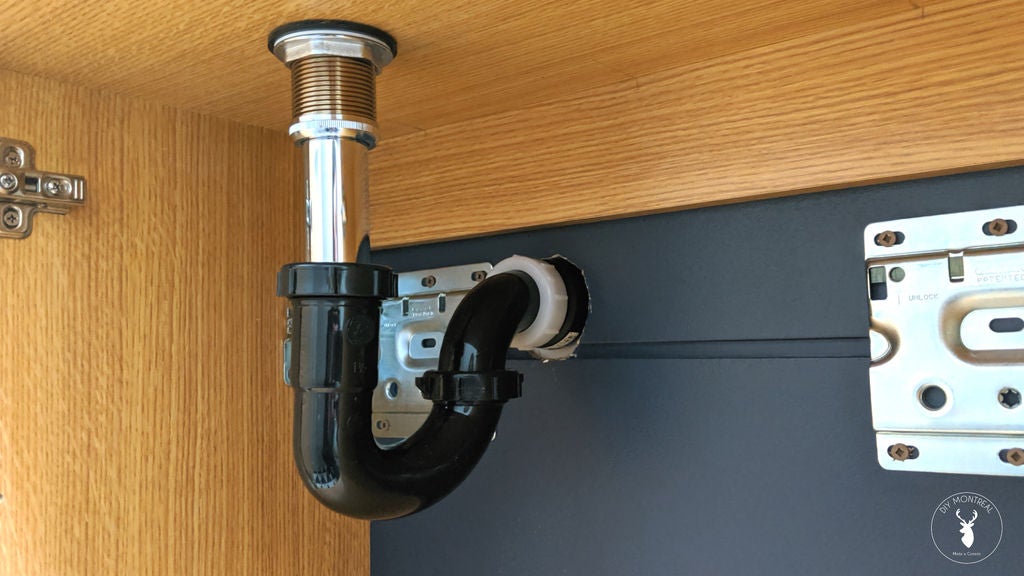



/bathroom-sink-drain-installation-2718843-03-6fee5b9d9f7d475abfe06a95ddb1f695.jpg)







